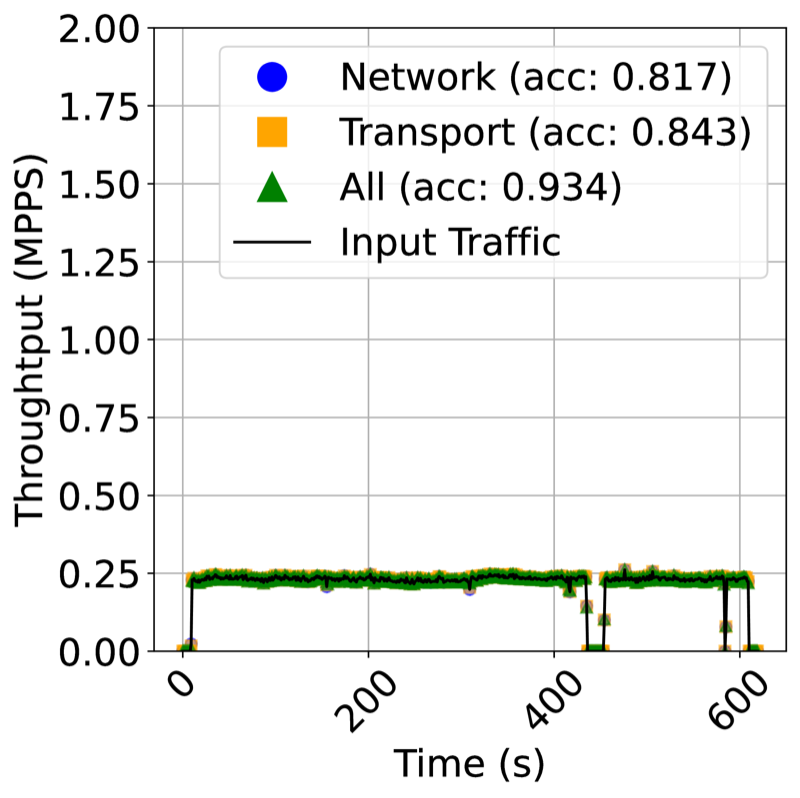Cruise Control
Dynamic model selection for ML-based network traffic analysis

Overview
Cruise Control is a dynamic model selection system that adaptively chooses the best ML model for network traffic analysis tasks based on real-time system conditions. Rather than selecting a single model offline, it maintains multiple pre-trained models with different accuracy-cost tradeoffs and dynamically switches between them to optimize performance under varying network conditions.
The Problem
Deploying machine learning models in real-world networks faces critical challenges:
- Static Selection: Traditional approaches select a single “optimal” model offline based on accuracy
- Changing Conditions: Network traffic load and system resources fluctuate constantly
- Performance Constraints: Real-world deployments have strict latency and throughput requirements
- Packet Loss: High traffic loads can overwhelm static model selections, leading to dropped packets
- Resource Limitations: Single models can’t adapt to varying computational availability
What Cruise Control Does
Cruise Control takes an online, system-driven approach to model selection:
- Model Portfolio: Pre-trains multiple candidate models for the same task with different accuracy-cost tradeoffs
- Lightweight Monitoring: Uses lightweight signals representing current system traffic processing ability
- Dynamic Selection: Adaptively selects the most appropriate model based on real-time system state
- Continuous Adaptation: Switches models as network conditions change
Key Features
- Multi-Model Architecture: Maintains portfolio of models with varying accuracy-efficiency tradeoffs
- Real-Time Selection: Chooses models based on current system state, not offline metrics
- Adaptive Response: Responds to fluctuating network loads and resource availability
- Minimal Overhead: Uses lightweight signals for decision-making
- Loss Prevention: Reduces packet drops during high traffic periods
Use Cases
- Traffic classification under varying loads
- Quality of Experience (QoE) inference in dynamic networks
- Intrusion detection with resource constraints
- Any network ML task with fluctuating traffic patterns
- Real-time network analysis with performance SLAs
Results
- 2.78% median accuracy improvement over offline-selected models
- 4x reduction in packet loss compared to static model selection
- Successfully tested on real-world traffic analysis tasks
- Handles traffic classification, QoE inference, and intrusion detection
How It Works
Cruise Control monitors system-level indicators of traffic processing capacity and uses these signals to select from a pre-trained set of models. When traffic load is low, it can use higher-accuracy, computationally expensive models. Under high load, it switches to faster, more efficient models to prevent packet loss while maintaining acceptable accuracy.
Resources
Citation
@article{hugon2024cruise,
title={Cruise Control: Dynamic Model Selection for ML-Based Network Traffic Analysis},
author={Hugon, Johann and Schmitt, Paul and Busson, Anthony and Bronzino, Francesco},
journal={arXiv preprint arXiv:2412.15146},
year={2024}
}
